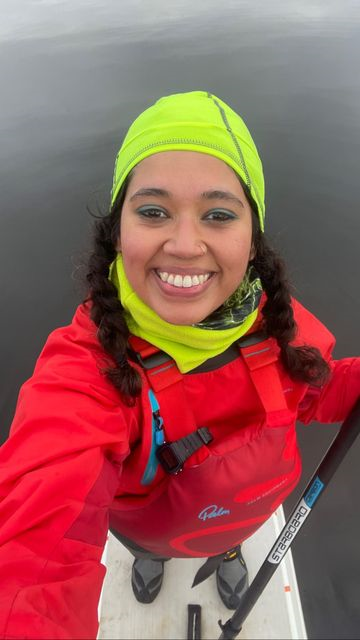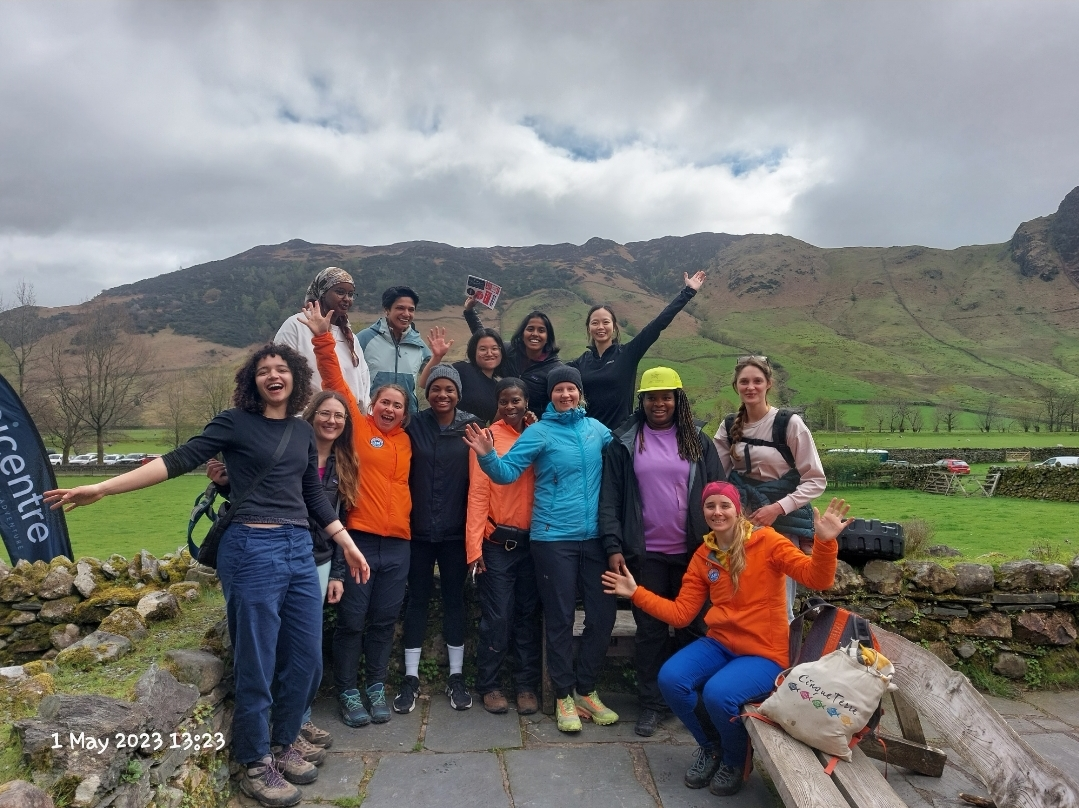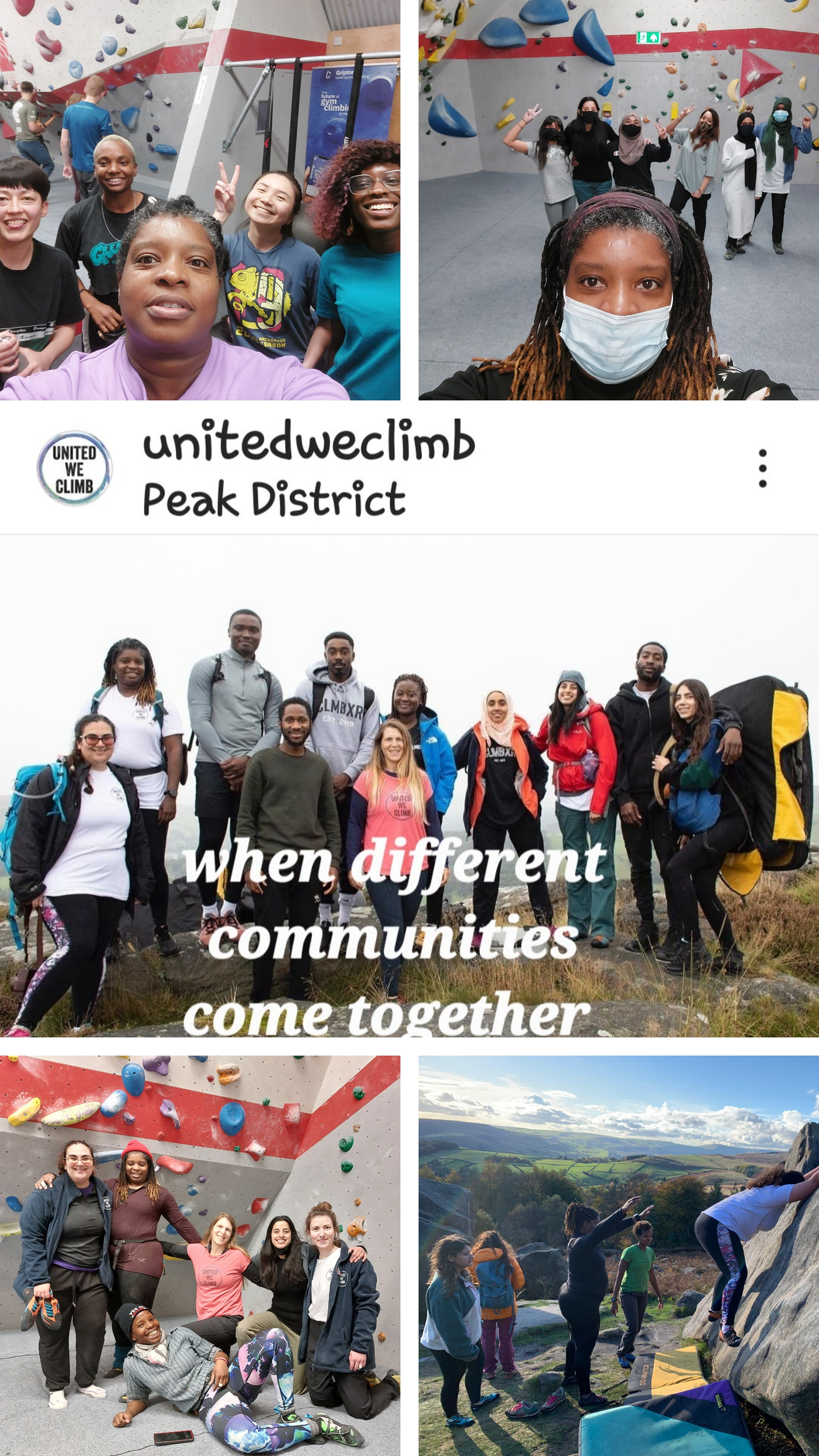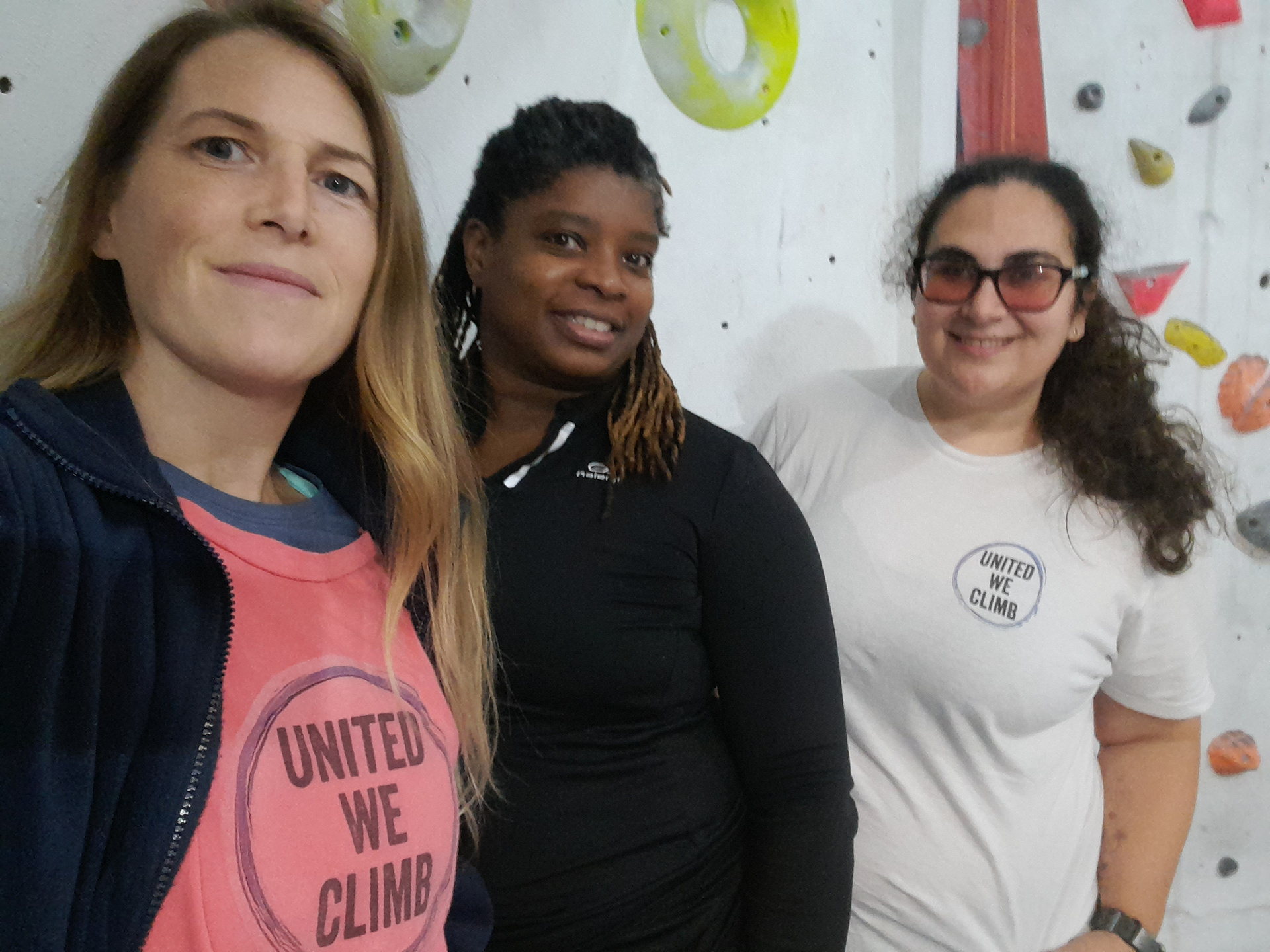




Community: a world apart for people of colour
By Adya Misra, People of Colour Paddle and Marie Uri, United We Climb.
Community: “a group of people living in the same place or having a particular characteristic in common. Or the condition of sharing or having certain attitudes and interests in common.” According to the Oxford English Dictionary.
Marie
At United We Climb, some of our community members are people of colour. Some of the activities we engage in are centred around people of colour because there is a lack of representation of this community in those activities. I want to address this head-on.
First and foremost, it's important to understand that there is no restriction preventing us from participating in activities, be it climbing, paddle boarding, surfing, or hiking. However, these activities are simply not commonly associated with or seen as accessible to people of colour.
There are communities working to bridge this gap, empower individuals, and support certain groups in accessing these sports. We want our community to have the opportunity to engage in these activities, so we strive to create a space—a safe space—by, and for people of colour.
Let me clarify: this is not about segregation or promoting racism, as some might argue. Instead, we are creating opportunities for a specific group of people to experience and access activities in a setting where they can share the experience with other individuals who resemble them, and they can relate to. Our ultimate goal is to reach the point where a specified safe space or special group for people of colour to take part in activities is no longer necessary.
Adya
Community groups like ours exist as a form of rebellion, in a way. A challenge to the status quo, if you will, which can make people uncomfortable, especially if they have benefitted from the way things have always been done. There are, of course, many people out there who support community groups such as ours because they believe that participation in sports and outdoor activities should be available to all.
I have been genuinely surprised by the support given to organisations such as mine and others, by people who have no vested interest or anything to gain from helping us. These individuals or organisations, become part of our close-knit community, even if they are not people of colour. As Marie says, this is our ultimate aim; we want more people to understand our goals in ensuring equity for people like us when participating in outdoor pursuits and help us while we get there.
Why do we need safe spaces for people of colour?
Marie
The need for safe spaces for people of colour arises from the desire to express our true selves without feeling oppressed, or constantly under the scrutiny of white individuals who may not fully understand our diverse cultures. In these spaces, we don't want to feel like we need to be quieter, less expressive, or hide our joy as black or brown individuals. We long for a space where we don't have to justify our presence or our existence.
When people of colour come together, we often face questioning and even attacks. We constantly find ourselves having to justify why we need a space, whereas white individuals can freely move around and go anywhere, without having to explain their presence. When they travel, nobody questions their right to be there. When they gather in large numbers, nobody questions why there are so many of them. The spaces they navigate are generally safe and welcoming by default.
Nobody asks white individuals where they come from, and they don't have to justify the shade of their skin. When they walk into a space, they are not accompanied by a silent wave of murmurs that follow them until they find their place.
Some white people insert themselves into spaces intended and designed for people of colour, often with arguments about why they believe they should be included. They might mention their own socio economic struggles or being from a marginalised community. However, they often fail to recognize that regardless, they still navigate the world with certain advantages due to the colour of their skin, advantages that people of colour don't always have.
This sad reality happens more often than you might think. Additionally, we also have to navigate the complexities of colourism. What should we do when someone with a passing white appearance wants to access spaces meant for people of colour? The answer lies in understanding that a community of people of colour is more than just about the colour of our skin. It encompasses cultural aspects as well. People of colour form a community, and those who are part of it usually have an inherent and cultural understanding of their membership. It's about shared heritage. You may be more familiar with the term "Bi-POC." People of colour is not solely about varying shades of skin colour, but also about where people are from, their heritage, and their culture.
Adya
I often get asked why a safe space is needed, and whether I am just promoting segregation based on race. Sometimes these questions come from people of colour and their queries help me realise that they are not the intended audience. They do not need a safe space or do not seek community with others like them. The people I am trying to reach are the young people who have seen their friends doing outdoor activities with their families, the families who go and enjoy nature in the evening, but these young people see that no one is organising activities for them. Or, the groups of people who are living their lives without leisure pursuits but are desperate for some down time. A lot of work around creating safe spaces outdoors involves changing how things are done, trying new things and adapting current structures so that people like us can also try something new.
Another aspect of creating safe spaces from my perspective, is building a ladder for those who are entering the sport with or after us. Marie and I have some privilege in that we can take part in an outdoor activity alongside our work life, but we have had our fair share of struggle and fighting an unequal system. With our community groups we hope to create a legacy of helping others, because someone clearly helped us when we started out.
Why is community work important ?
Marie
The lack of privileges and access for communities of colour already poses a significant barrier. They constantly have to fight for support, funding, and the necessary human resources to sustain these projects. Often, these initiatives are run by volunteers who dedicate their spare time, while juggling other commitments like their day jobs and personal responsibilities.
It's important to highlight this aspect of community work. When we centre our efforts on supporting specific segments of the community, such as people of colour, individuals with disabilities, those facing mental health challenges, those with chronic illnesses, or members of the LGBTQIA+ community, we recognize their need for their own space. These communities thrive on the opportunity to share joy, experiences, activities, and support without feeling oppressed. They should not have to justify the space they occupy because, in reality, the space they occupy is already marginalised and limited.
By acknowledging the struggles these communities face and the additional efforts required to provide them with inclusive spaces, we shed light on the importance of their autonomy and the necessity of supporting their specific needs.
Adya
Community led change is a bit of a slow burn. It takes a long time because the work lacks resources, time and dedicated personnel, as Marie has already mentioned. However, authentic and long-lasting change can only take place if the community it intends to benefit plays a pivotal role in creating change. Larger organisations will often rely on grassroots communities' attempts to drive this change. They may ask us to help them increase participation in outdoor activities, they may ask us to undertake a lot of labour to highlight the challenges we face as a community, in order to consider how to break down barriers or they may share our photos on social media as part of advertising campaigns.
All of these things are extremely important initiatives and their impact should not be minimised. But these initiatives start to feel empty or inauthentic if they are not accompanied by real change that helps bridge the gap faced by people of colour in the outdoors. In addition, many efforts to include people of colour involve us doing a lot of heavy lifting with the credit, income and publicity going to the larger organisations. “Can you give a talk about your work 500 miles away?” or “could you travel on a weekday 300 miles away so we can feature you in a magazine?” or “Please can you send us a 10 page essay on why your work is interesting or important?” I’m grateful that many people are patient with me as I manage my day job, my volunteer coaching activities and running my community group but many aren’t.
I have to often ask myself; will this feature really help my community, or is it just publicity for me? I’m not interested in putting myself out there, I’d like to remove barriers for others in accessing outdoor activities.
Follow on Instagram...
Thank you to People of Colour Paddle, United We Climb, Marie Uri and Adya Misra for providing the photographs used.
